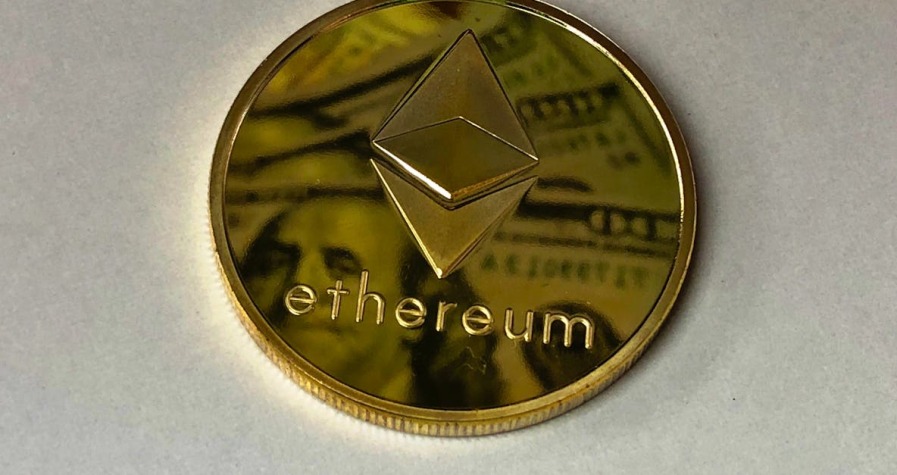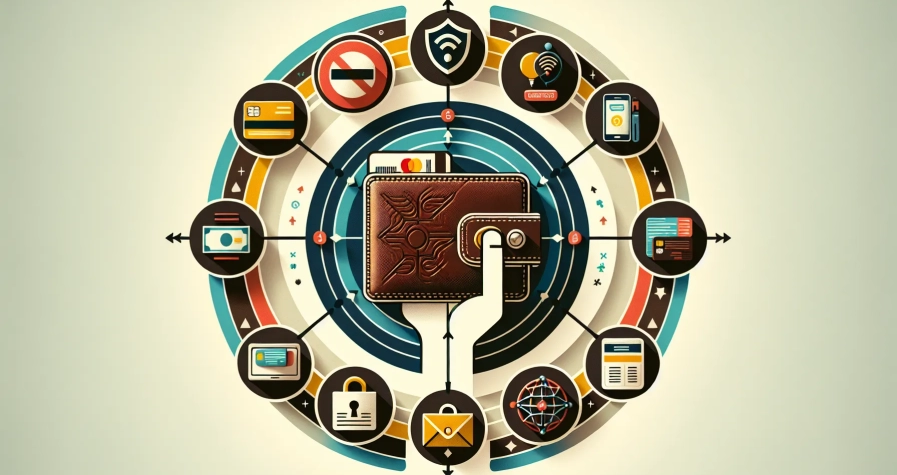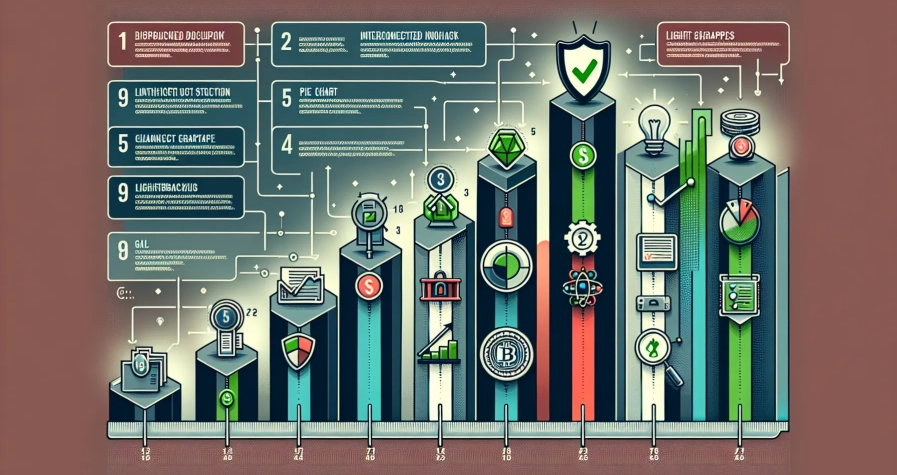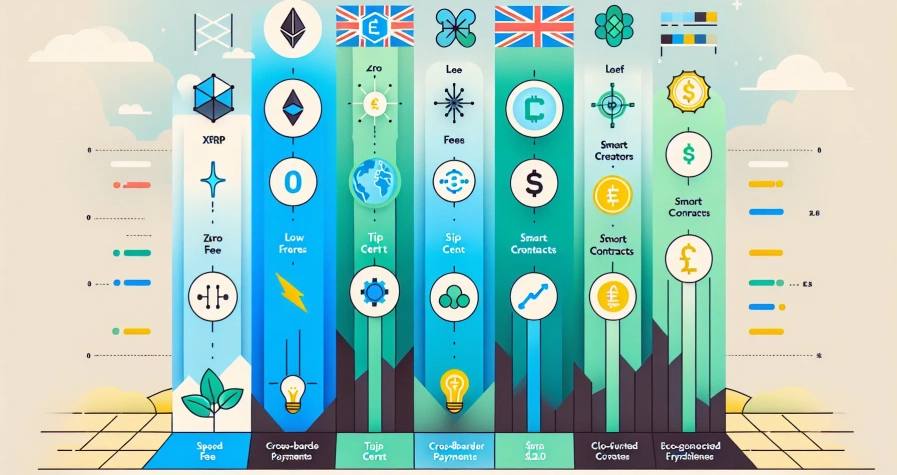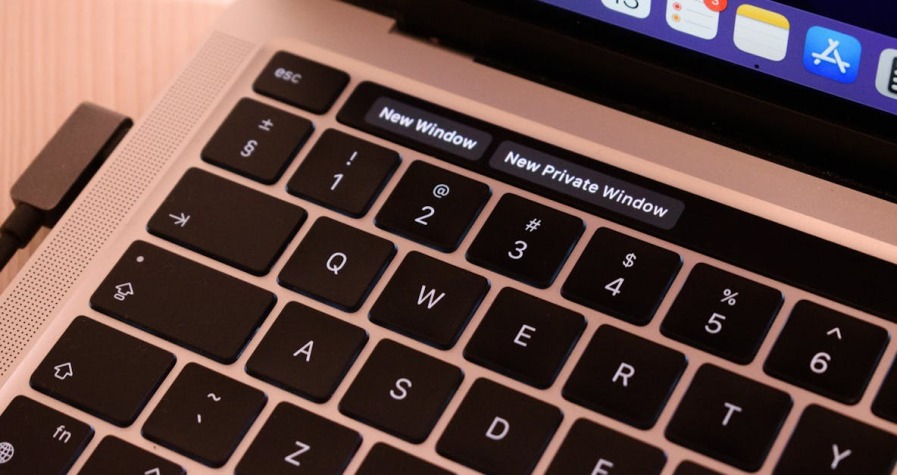Key Takeaways
- Layer 2 solutions are secondary frameworks built on top of existing blockchains that process transactions off-chain whilst inheriting the security of the main network, enabling faster speeds and lower costs without compromising on safety.
- These solutions dramatically reduce transaction costs by 90-99% compared to Layer 1 processing, making blockchain technology accessible for everyday use cases like microtransactions, gaming, and frequent trading activities.
- Four main types exist to suit different needs: State Channels for instant micropayments, Sidechains for general-purpose applications, Plasma Chains for high-volume processing, and Rollups for DeFi applications with Layer 1 security.
- Popular networks like Polygon, Arbitrum, and Optimism are already processing millions of transactions daily with fees under £0.01-£3, demonstrating real-world scalability improvements over Ethereum’s mainnet.
- Enhanced user experience includes near-instant confirmations and predictable fees, eliminating the frustrations of network congestion and failed transactions that plague Layer 1 networks during peak usage.
- Trade-offs include security risks from bridges and increased complexity in asset management, with withdrawal delays and liquidity fragmentation across multiple networks requiring careful consideration before adoption.
You’ve probably heard about blockchain’s scalability challenges – slow transaction speeds and sky-high fees that make simple transfers cost more than your morning coffee. These issues have plagued major networks like Ethereum for years, leaving developers and users frustrated with the limitations.
That’s where Layer 2 scaling solutions come into play. Think of them as express lanes built on top of existing blockchain highways, designed to process transactions faster and cheaper whilst maintaining the security you’d expect from the main network.
These innovative solutions aren’t just theoretical concepts – they’re already transforming how we interact with decentralised applications and cryptocurrencies. From lightning-fast payments to seamless DeFi experiences, Layer 2 networks are reshaping the blockchain landscape and making digital assets more accessible to everyday users.
What Are Layer 2 Scaling Solutions?
Layer 2 scaling solutions are secondary frameworks built on top of existing blockchain networks to enhance transaction throughput whilst maintaining the security of the underlying base layer. You can think of these solutions as additional processing layers that handle transactions off the main blockchain before settling final results back to the primary network.
These solutions operate by moving transaction execution away from the main blockchain (Layer 1) whilst inheriting its security properties. You benefit from significantly faster transaction speeds and reduced fees compared to processing everything directly on the base layer. The main blockchain serves as the settlement layer, providing final security guarantees for all transactions processed on Layer 2.
Key characteristics of Layer 2 solutions include:
- Off-chain processing – Transactions execute on separate networks before final settlement
- Security inheritance – Solutions derive security from the underlying Layer 1 blockchain
- Interoperability – Users can move assets between Layer 1 and Layer 2 seamlessly
- Cost efficiency – Transaction fees drop by 90-99% compared to Layer 1 processing
- Speed enhancement – Processing capacity increases from 15 transactions per second to thousands
Popular Layer 2 implementations demonstrate varying approaches to scalability challenges. Polygon processes over 2 million transactions daily with average fees below $0.01. Arbitrum reduces Ethereum gas costs by approximately 95% whilst maintaining full compatibility with existing applications. Optimism achieves similar cost reductions through optimistic rollup technology.
You’ll find Layer 2 solutions particularly valuable for frequent trading activities, microtransactions, and gaming applications where high fees would otherwise make these use cases impractical. DeFi protocols increasingly deploy on these networks to provide users with affordable access to lending, borrowing, and trading services.
The Blockchain Scalability Problem
Blockchain networks face fundamental limitations that restrict their adoption for mainstream applications. These constraints create bottlenecks affecting transaction processing capacity and user experience across major networks.
Transaction Speed Limitations
Bitcoin processes approximately 7 transactions per second whilst Ethereum handles around 15 transactions per second. Traditional payment systems like Visa process 24,000 transactions per second during peak periods, highlighting the significant performance gap you encounter when using blockchain networks.
Major cryptocurrencies struggle with throughput limitations due to their consensus mechanisms and block size restrictions. Bitcoin’s 10-minute block time and 1MB block size create natural constraints, whilst Ethereum’s proof-of-work consensus requires extensive computational validation for each transaction.
Gaming applications and decentralised exchanges require thousands of transactions per second to function effectively. Current Layer 1 networks cannot support these requirements, forcing developers to implement workarounds or abandon blockchain integration entirely.
High Gas Fees
Ethereum gas fees reached over £200 per transaction during network congestion periods in 2021 and 2022. These elevated costs price out retail users and make small transactions economically unviable for everyday applications.
Gas fees fluctuate based on network demand, creating unpredictable costs for users and businesses. Simple token transfers that cost £5 during low activity can surge to £50 or more during peak usage periods, particularly when popular NFT drops or DeFi protocols experience high volume.
Smart contract interactions incur higher fees than basic transfers, with complex DeFi operations costing £100-300 during congested periods. These expenses make automated trading strategies, yield farming, and frequent portfolio rebalancing prohibitively expensive for most users.
Network Congestion Issues
Network congestion occurs when transaction demand exceeds processing capacity, creating delays and fee escalation. Ethereum frequently experiences congestion during major events like ICO launches, NFT releases, or market volatility periods.
Pending transaction pools grow during congestion, with some transactions waiting hours or days for confirmation. Users must increase gas prices to prioritise their transactions, creating a bidding war that further inflates costs across the network.
Congestion affects all network participants regardless of transaction value or urgency. Small payments face the same delays and fee pressures as large institutional transfers, creating equity issues and limiting blockchain accessibility for global users seeking affordable financial services.
How Layer 2 Solutions Work
Layer 2 scaling solutions operate by processing transactions away from the main blockchain and periodically anchoring results to Layer 1 for security. This architecture enables you to experience faster transactions whilst maintaining the decentralised security of the underlying blockchain.
Off-Chain Processing
Off-chain processing forms the core mechanism that allows Layer 2 solutions to dramatically increase transaction throughput. Instead of executing every transaction directly on Layer 1, these solutions bundle multiple transactions together and process them on secondary networks.
Your transactions get processed in batches rather than individually, which reduces the computational load on the main blockchain. Layer 2 networks can handle thousands of transactions simultaneously whilst the base layer focuses on validation and security. This bundling approach minimises interactions with Layer 1, reducing congestion and speeding up confirmation times from minutes to seconds.
Processing occurs through various technical implementations including Optimistic Rollups and zk-Rollups. Each method optimises performance for specific use cases such as DeFi applications, NFT marketplaces, and blockchain gaming. The off-chain environment allows you to interact with decentralised applications at near-instantaneous speeds whilst paying significantly lower fees.
Settlement on Layer 1
Settlement represents the final step where Layer 2 solutions anchor their processed transactions to the main blockchain. After processing transactions off-chain, Layer 2 networks generate compressed proofs or summaries that capture the aggregated state changes.
These compressed summaries contain mathematical proofs that represent hundreds or thousands of individual transactions in a single data package. Layer 1 validates these proofs and updates the blockchain’s state accordingly, ensuring all off-chain activity becomes permanently recorded on the secure base layer.
Periodic settlement occurs at regular intervals, typically every few minutes or hours depending on the specific Layer 2 implementation. This approach maintains the security and immutability that make blockchain technology trustworthy whilst processing the bulk of transactions efficiently off-chain. Your funds and transaction history remain secure through this settlement process, as the main blockchain serves as the ultimate source of truth for all activity.
| Settlement Aspect | Description |
|---|---|
| Frequency | Every few minutes to hours depending on implementation |
| Data Type | Compressed proofs representing multiple transactions |
| Security | Inherits full security from Layer 1 blockchain |
| Finality | Transactions become immutable once settled on base layer |
Types of Layer 2 Scaling Solutions
Layer 2 scaling solutions offer four distinct approaches to blockchain scalability, each designed for specific use cases and transaction patterns. Understanding these different types helps you choose the optimal solution for your blockchain interactions.
State Channels
State channels create direct communication pathways between parties, enabling numerous transactions off-chain before settling the final result on Layer 1. You open a channel by locking funds in a smart contract, conduct unlimited transactions within the channel, and close it by submitting the final state to the main blockchain.
Key Benefits:
- Lightning-fast transaction speeds with near-instant confirmations
- Minimal transaction costs approaching zero fees
- Perfect for high-frequency interactions like micropayments
- Excellent privacy since intermediate transactions remain off-chain
Limitations:
- Requires all participants to remain online during active periods
- Funds become locked within the channel until closure
- Setup costs can be prohibitive for casual one-time users
- Complex dispute resolution mechanisms needed
Popular Examples:
Bitcoin Lightning Network handles over 5,000 nodes processing micropayments, whilst Ethereum’s Raiden Network and Celer provide similar functionality for ERC-20 tokens.
Sidechains
Sidechains operate as independent blockchains running parallel to Layer 1, maintaining their own consensus mechanisms whilst connecting through two-way bridges. You transfer assets from the main chain to the sidechain, conduct transactions within the sidechain’s ecosystem, and bridge assets back when needed.
Key Benefits:
- Support for complex smart contracts with full programmability
- Higher transaction throughput by operating independently
- Customisable parameters for specific use cases
- Reduced congestion on the main blockchain
Limitations:
- Security depends entirely on sidechain validators rather than Layer 1
- Less decentralised due to typically smaller validator sets
- Bridge vulnerabilities can expose funds to additional risks
- Potential for different economic incentives creating conflicts
Popular Examples:
POA Network processes transactions with 5-second block times, whilst xDai Chain (now Gnosis Chain) offers stable transaction fees using DAI stablecoin.
Plasma Chains
Plasma chains function as child chains processing transactions independently whilst submitting periodic proofs back to Layer 1 for security. You deposit funds into the Plasma chain, execute multiple transactions within the child chain environment, and withdraw funds after the required challenge period.
Key Benefits:
- Extremely high scalability potential handling thousands of transactions per second
- Excellent for high-volume applications requiring frequent transactions
- Effective network load distribution reducing main chain congestion
- Enhanced privacy through off-chain transaction processing
Limitations:
- Extended withdrawal periods lasting several days for security
- Limited support for general-purpose smart contracts
- Greater centralisation due to fewer operators
- Complex exit procedures during network disputes
Popular Examples:
Polygon originally implemented Plasma technology before transitioning to other scaling methods, demonstrating Plasma’s evolution in the Layer 2 ecosystem.
Rollups
Rollups bundle multiple transactions into compressed proofs submitted to Layer 1, combining scalability benefits with inherited security. You execute transactions on the rollup network, which processes them off-chain and submits cryptographic proofs to the main blockchain for verification.
Key Benefits:
- High scalability whilst maintaining Layer 1 security guarantees
- Efficient data compression reducing on-chain storage requirements
- Lower transaction costs compared to direct Layer 1 interaction
- Faster transaction finality than traditional blockchain processing
- Computational overhead for proof generation and verification
- Latency variations depending on rollup type and implementation
- Technical complexity requiring sophisticated infrastructure
- Withdrawal delays varying by rollup architecture
| Solution Type | Transaction Speed | Security Model | Use Case Focus | Setup Complexity |
|---|---|---|---|---|
| State Channels | Instant | Participant-secured | Micropayments | High |
| Sidechains | 5-60 seconds | Validator-secured | General purpose | Medium |
| Plasma Chains | 1-5 seconds | Layer 1 secured | High volume | Medium |
| Rollups | 1-10 seconds | Layer 1 secured | DeFi applications | Low |
Popular Layer 2 Networks
Several Layer 2 networks have emerged as leading solutions, each implementing different approaches to scaling blockchain technology. These established networks demonstrate proven success in reducing costs and increasing transaction speeds across various use cases.
Polygon
Polygon stands out as a multi-chain scaling platform that combines Plasma chains and zk-Rollups to achieve exceptional scalability. You’ll find that Polygon handles thousands of transactions per second whilst maintaining minimal fees, making it particularly attractive for high-frequency trading and gaming applications.
The network operates through two primary technologies: Polygon POS (Proof of Stake) utilises sidechain architecture for rapid transaction processing, whilst zkEVM leverages zero-knowledge proofs for enhanced security. However, zkEVM requires specialised hardware for optimal performance, which may limit accessibility for some developers.
Polygon processes over 2 million transactions daily with fees typically under £0.01 per transaction. This efficiency makes it ideal for decentralised applications requiring high throughput without compromising on cost-effectiveness.
Arbitrum
Arbitrum employs Optimistic Rollup technology to scale Ethereum without requiring significant modifications to existing smart contracts. You can deploy your Ethereum applications directly on Arbitrum with minimal code changes, maintaining full compatibility with the Ethereum Virtual Machine.
The platform offers two distinct products: Arbitrum One provides greater decentralisation through a robust validator network, whilst Arbitrum Nova delivers lower fees at the expense of some decentralisation. This dual approach allows you to choose between maximum security or minimum costs based on your specific requirements.
Arbitrum supports complex smart contract functionality and achieves high transaction throughput by bundling multiple transactions into single proofs. The network significantly reduces gas costs compared to Ethereum mainnet whilst maintaining the security guarantees of the base layer.
Optimism
Optimism utilises Optimistic Rollup architecture to process approximately 2,000 transactions per second with full Ethereum smart contract compatibility. You can migrate your existing Ethereum applications to Optimism seamlessly, benefiting from reduced fees and faster confirmation times.
The network completed its Bedrock upgrade in June 2023, which improved gas fee efficiency and reduced block confirmation times substantially. This upgrade enhanced the overall user experience by providing more predictable transaction costs and faster settlement.
However, Optimism implements a seven-day withdrawal period for moving assets back to Ethereum mainnet due to fraud-proof mechanisms. This waiting period ensures security by allowing time for validators to challenge potentially fraudulent transactions, though it may impact users requiring immediate liquidity on Layer 1.
Benefits of Layer 2 Solutions
Layer 2 scaling solutions deliver three fundamental advantages that transform your blockchain experience. These benefits directly address the limitations of Layer 1 networks through innovative off-chain processing techniques.
Faster Transaction Processing
Layer 2 solutions enable near-instant confirmation times by executing transactions off-chain or through specialised payment channels. You’ll experience dramatically improved speeds compared to Layer 1 networks – while Ethereum processes 15 transactions per second, Layer 2 networks handle thousands simultaneously.
Real-time applications benefit significantly from this acceleration:
- DeFi protocols execute trades without network delays
- Gaming platforms process microtransactions instantly
- Trading applications facilitate rapid order execution
- Payment systems deliver immediate settlement
The speed improvements occur because Layer 2 networks process transaction batches off the main blockchain. Your transactions receive confirmation within seconds rather than minutes, making blockchain technology practical for time-sensitive applications that previously couldn’t function on Layer 1.
Reduced Costs
Transaction fees drop by 90-99% when you use Layer 2 solutions instead of mainnet processing. This cost reduction stems from batching multiple transactions together before settling them on Layer 1, distributing the base layer’s fees across hundreds of transactions.
| Network Type | Average Fee | Daily Capacity |
|---|---|---|
| Ethereum Mainnet | £20-£200 | 1.2 million transactions |
| Polygon | £0.01 | 2+ million transactions |
| Arbitrum | £0.10-£2 | 500,000+ transactions |
| Optimism | £0.10-£3 | 300,000+ transactions |
Cost efficiency particularly benefits these use cases:
- Microtransactions become economically viable
- Frequent trading strategies operate profitably
- Small-value transfers retain their worth
- Retail users access blockchain services affordably
Your reduced costs result from Layer 2’s computational efficiency. The networks handle complex processing off-chain whilst only paying Layer 1 fees for final settlement, creating significant savings that get passed to users.
Enhanced User Experience
Layer 2 solutions eliminate network congestion frustrations through improved transaction finality and predictable fees. You’ll encounter fewer failed transactions and experience consistent performance even during high-demand periods.
User experience improvements include:
- Predictable transaction costs without sudden spikes
- Reliable network performance during peak usage
- Seamless interaction with decentralised applications
- Stable connection without network timeouts
Your improved experience stems from Layer 2’s ability to absorb transaction volume that would otherwise overwhelm Layer 1. The solutions maintain responsive performance by processing transactions efficiently off-chain whilst preserving the security and decentralisation of the underlying blockchain through periodic anchoring.
Challenges and Limitations
Layer 2 scaling solutions transform blockchain performance but introduce technical complexities and security considerations that affect your interaction with these networks. Understanding these trade-offs helps you make informed decisions about when and how to use Layer 2 solutions.
Security Trade-offs
Layer 2 solutions inherit security from their underlying Layer 1 blockchain but create new attack surfaces through bridges and off-chain protocols. Your assets face additional risks when moving between Layer 1 and Layer 2 networks, as several high-profile bridging hacks have demonstrated significant vulnerabilities in these connection points.
Bridge security remains your primary concern when using Layer 2 solutions. Cross-chain bridges hold billions of pounds in assets and become attractive targets for hackers seeking to exploit smart contract vulnerabilities or governance weaknesses. You must trust these bridge protocols to secure your funds during transfers between networks.
Off-chain protocol risks affect your transaction security differently than Layer 1 operations. Layer 2 validators and sequencers process your transactions before submitting proofs to the main chain, creating dependency on these intermediaries. Any compromise in off-chain infrastructure can delay your withdrawals or, in extreme cases, freeze your assets temporarily.
Layer 1 security directly impacts your Layer 2 experience since any compromise of the underlying blockchain threatens all Layer 2 solutions built upon it. Your Layer 2 assets remain only as secure as the base layer’s consensus mechanism and validator network.
Complexity Issues
Layer 2 implementations require specialised knowledge in cryptography, transaction routing, and state synchronisation that increases development complexity. You encounter this complexity through multiple user interfaces, varying wallet configurations, and different transaction processes across Layer 2 networks.
Account management becomes more challenging as you operate across multiple Layer 2 solutions. Your wallet must track balances on different networks, manage separate transaction histories, and handle diverse token standards. This fragmentation complicates your asset monitoring and requires additional steps for portfolio management.
Withdrawal processes introduce timing complexities that affect your liquidity planning. Optimistic Rollups impose seven-day withdrawal periods for moving assets back to Ethereum mainnet, while zero-knowledge rollups may require hours for proof generation. You must account for these delays when planning your transaction timing.
Technical troubleshooting becomes more difficult when issues arise across multiple network layers. Your transaction might fail at the Layer 2 level, during bridge transfers, or upon Layer 1 settlement, requiring different diagnostic approaches for each failure point. This complexity can slow resolution times and increase your support requirements.
Liquidity fragmentation occurs as your assets become distributed across various Layer 2 networks. Each network maintains separate liquidity pools, potentially reducing your trading options and requiring additional bridge transactions to access optimal pricing across different platforms.
Conclusion
Layer 2 scaling solutions represent a pivotal advancement in blockchain technology that’s already reshaping how you interact with digital assets. These solutions successfully address the fundamental bottlenecks that have limited mainstream blockchain adoption whilst maintaining the security you expect from established networks.
Whether you’re exploring DeFi applications trading frequently or simply seeking more affordable transaction options Layer 2 networks offer tangible benefits today. The dramatic reduction in fees and increase in transaction speeds make blockchain technology genuinely practical for everyday use.
As the ecosystem continues to mature you’ll find even more sophisticated Layer 2 implementations emerging. Understanding these solutions now positions you to take full advantage of the faster more cost-effective blockchain experience they provide.
Frequently Asked Questions
What are Layer 2 scaling solutions?
Layer 2 solutions are secondary frameworks built on top of existing blockchain networks like Ethereum. They process transactions off the main blockchain (Layer 1) to improve speed and reduce costs, then settle final results back to the base layer. Think of them as express lanes that enhance transaction efficiency whilst preserving the security of the underlying blockchain network.
Why are Layer 2 solutions needed?
Blockchain networks face significant scalability challenges. Bitcoin processes only 7 transactions per second and Ethereum handles 15, compared to Visa’s 24,000. High gas fees during network congestion can exceed £200 per transaction, making blockchain technology inaccessible for everyday users and small transactions. Layer 2 solutions address these limitations by enabling faster, cheaper transactions.
How do Layer 2 solutions work?
Layer 2 solutions process transactions away from the main blockchain through off-chain processing. They bundle multiple transactions together, process them on secondary networks, then generate compressed proofs that are submitted to Layer 1 for validation. This approach dramatically increases transaction throughput whilst maintaining the security and immutability of the base blockchain.
What are the main types of Layer 2 solutions?
There are four primary types: State Channels (enable rapid transactions between parties), Sidechains (operate independently with their own consensus), Plasma Chains (function as child chains submitting proofs to Layer 1), and Rollups (bundle transactions into compressed proofs). Each type is tailored for specific use cases and transaction patterns.
Which Layer 2 networks are most popular?
Polygon, Arbitrum, and Optimism are leading Layer 2 networks. Polygon processes over 2 million transactions daily with minimal fees using a multi-chain approach. Arbitrum employs Optimistic Rollup technology with minimal code changes required. Optimism processes around 2,000 transactions per second and recently improved through its Bedrock upgrade.
What are the benefits of using Layer 2 solutions?
Layer 2 solutions offer three main benefits: dramatically faster transaction processing with near-instant confirmation times, reduced costs with fees dropping 90-99%, and enhanced user experience through elimination of network congestion frustrations. These improvements make blockchain technology more practical for time-sensitive applications and everyday use.
Are there any risks with Layer 2 solutions?
Yes, Layer 2 solutions introduce new complexities and risks. Security concerns include potential vulnerabilities in cross-chain bridges and off-chain protocols. Technical challenges involve managing assets across multiple networks, withdrawal delays (up to 7 days for some solutions), and increased complexity requiring specialised knowledge for optimal use.
Can I move assets between different Layer 2 networks?
Yes, Layer 2 solutions offer interoperability features that allow seamless asset movement between networks. However, this process can involve technical complexities and potential security risks when using cross-chain bridges. Users should understand withdrawal periods and fees associated with moving assets between different Layer 2 solutions and back to Layer 1.


